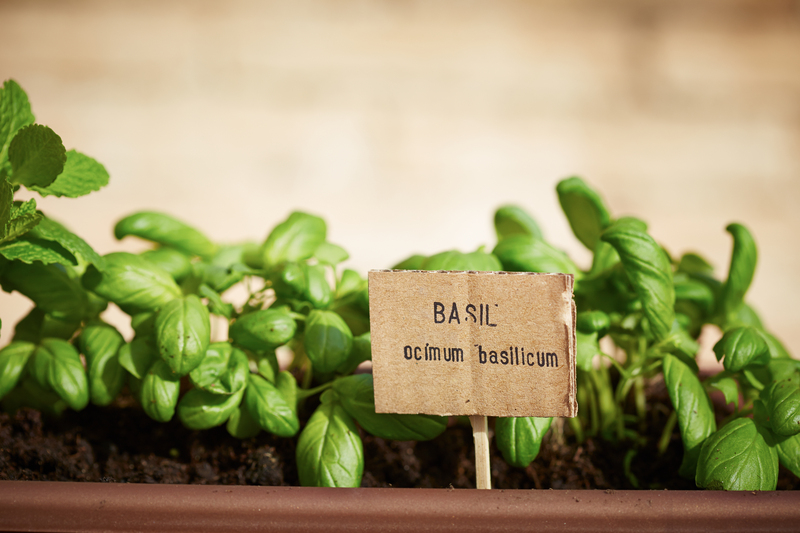Gardener's Guide to Handling Excessive Wind in Outdoor Areas
Posted on 13/06/2025
Gardener's Guide to Handling Excessive Wind in Outdoor Areas
Gardening in windy locations poses unique challenges. Harsh winds can break stems, dry out soil, and lead to stunted or damaged plants. But with the right knowledge and preparation, any gardener can turn gusty sites into thriving outdoor sanctuaries. This comprehensive guide covers effective strategies for managing excessive wind in outdoor garden spaces, helping you protect your plants and design a beautiful, resilient landscape.
Understanding the Impact of Wind on Outdoor Gardens
Excessive wind in gardens doesn't just create inconvenience; it can cause significant harm to your plants and hardscaping.
- Physical damage - Wind can break branches, topple top-heavy plants, and uproot young trees.
- Increased transpiration - Gusts strip moisture from leaves and soil, leading to water-stressed plants.
- Soil erosion - Blowing wind removes valuable topsoil and organic matter, compromising plant health.
- Reduced pollination - Wind can disrupt pollinators and blow blossoms off before pollination.
- Spread of diseases and pests - Some wind currents transfer fungal spores and insect pests between plants.
Mitigating the effects of strong wind is crucial for creating a robust and productive outdoor space.

How to Assess Wind Conditions in Your Garden
Before selecting wind management strategies, it's important to evaluate the wind exposure in your specific area.
Identify Direction and Intensity
- Use local weather resources or wind-mapping tools to determine prevailing wind directions and typical gust strength.
- Observe your garden at different times of the day and seasons for wind patterns.
- Look for evidence - bent trees, sunken soil, or worn fences often indicate wind corridors.
- Temporary tools like flags or wind socks can help visualize wind movement in your outdoor area.
Analyze the Microclimates
- Check for natural windbreaks such as hills, buildings, or thick tree lines.
- Identify open areas needing protection (patios, vegetable beds, young orchards).
By understanding where and how wind affects your garden, you can effectively implement proactive solutions.
Windbreaks: The First Line of Defense Against Strong Winds
Windbreaks are barriers designed to reduce wind speed and protect outdoor gardens. They come in various forms and can decrease wind velocity by 20-70% depending on design and density.
Types of Windbreaks
- Living Windbreaks: Rows of trees, shrubs, or tall grasses planted strategically to deflect and absorb wind.
- Solid Windbreaks: Fences, walls, or other built structures designed to block wind.
- Temporary Windbreaks: Burlap, shade cloth, or netting stretched between stakes, useful for protecting seedlings and annuals.
Design Principles for Effective Windbreaks
- Permeability: Semi-permeable barriers (such as hedges or slatted fences) are more effective than solid ones, as wind flows over and through, reducing turbulence.
- Height: The tallest part of your windbreak determines the length of protection; a windbreak's sheltered zone can extend up to 10-15 times its height downwind.
- Position windbreaks perpendicular to prevailing winds for optimal protection.
- Use a combination of evergreen and deciduous plants for year-round effectiveness.
Tip: In large or especially vulnerable gardens, consider multiple staggered windbreaks to diffuse wind and create sheltered microclimates.
Smart Plant Selection for Windy Gardens
Choosing the right plants makes a significant difference in a wind-exposed garden. Some species thrive in blustery conditions, while others are highly susceptible to windburn and breakage.
Characteristics of Wind-Resilient Plants
- Flexible stems that bend rather than snap
- Small, tough, or waxy leaves that resist moisture loss
- Low, compact growth habits
- Dense root systems for anchorage
Recommended Wind-Tolerant Plant Varieties
- Sea buckthorn (Hippophae rhamnoides)
- Blackthorn (Prunus spinosa)
- Hawthorn (Crataegus monogyna)
- Escallonia, Elaeagnus, Oleaster
- Lavender (Lavandula) and Rosemary (Rosmarinus)
- Heritage or shrub roses with strong root systems
Experiment with native species in your area, as they are often best adapted to local wind conditions.
Garden Design Strategies to Minimize Wind Damage
A well-designed garden layout enhances wind protection as much as choosing the right plants.
Clever Site Planning
- Place the most fragile plants and outdoor seating in the lee of windbreaks or buildings.
- Group plants closely together to create mutual wind shelter and reduce transpiration.
- Design terraces or raised beds with protective edges to shield soil and roots.
- Stagger planting rows diagonally to disrupt and slow down wind movement.
Layering for Wind Mitigation
- Plant tall, wind-tolerant hedges around the perimeter as the first defense line.
- Use mid-sized shrubs inside the fence or hedge barrier.
- Fill in with compact, low-lying plants and creepers as groundcover, which helps anchor soil and stabilize the microclimate.
This layered approach mimics nature's edge habitats, creating multiple zones of wind reduction and moisture retention.
Practical Tips for Wind Protection in Outdoor Spaces
In addition to structural changes and smart planting, simple gardening practices can help you handle excessive wind more effectively.
Mulching and Soil Management
- Apply thick organic mulch (straw, wood chips, compost) to keep soil anchored and conserve moisture.
- Use groundcover plants to reduce bare soil exposure and erosion.
- Water deeply but less frequently to encourage deeper root growth, making plants more wind-firm.
Staking and Support
- Support young trees and tall herbaceous plants with stakes or guy wires--allow a bit of movement so stems grow stronger.
- Use soft ties to avoid bruising stems during blustery weather.
- Remove supports gradually as plants mature and roots firm up.
Seasonal Preparation
- Prune dead or overlong branches in autumn and early spring to reduce wind sail.
- Monitor and repair fence panels, trellises, and windbreaks before stormy seasons begin.
- Cloches, row covers, and plant tents offer emergency protection to delicate crops during windstorms.
Pro tip: Install water butts or low-level rain tanks to capture water, as wind-dried gardens often need extra irrigation after prolonged gusts.
Protecting Outdoor Living Areas and Furniture
Excessive wind doesn't just impact plants; it can make patios, decks, and play areas uncomfortable or unsafe.
Windproofing Outdoor Furniture
- Choose heavier materials like metal, wood, or stone for outdoor furnishings over lightweight plastic.
- Anchor items with sandbags, ties, or secured bases if exposure is unavoidable.
- Use privacy screens, pergolas, or retractable wind sails to create pleasant, sheltered zones.
Designing Relaxing Wind Shelters
- Place seating nooks against building walls or thick hedges for natural windbreaks.
- Grow vertical gardens or espaliered trees strategically around patios.
- Consider arbors or green walls with climbing vines to soften breezes and provide shade.
These techniques ensure you enjoy your outdoor space even on breezy days.

Frequently Asked Questions About Gardening in Windy Areas
1. Can all plants survive in high-wind environments?
Not all plants are suited for windy outdoor locations. Some, such as delicate ferns, large-leaved tropicals, or heavily hybridized flowers, require more sheltered environments. Focus on native, robust species or those with adaptations for wind tolerance.
2. Should I water my garden more in windy weather?
Yes, wind increases evaporation from both soil and leaf surfaces. Water deeply, but avoid overwatering, which can weaken roots. Mulching also helps retain precious soil moisture in exposed gardens.
3. How high should my windbreak be?
The height of your windbreak directly influences how much area is sheltered. Aim for a barrier at least as tall as the plants you're trying to protect. For large vegetable plots or orchards, 6-8 feet is a good starting point, but taller is often better.
4. Are solid fences better than hedges for wind protection?
Semi-permeable windbreaks (like hedges or slatted fences) usually offer superior protection. They slow wind rather than create swirling turbulence, which is often the case with solid barriers.
5. What emergency steps can I take just before a windstorm?
- Stake or tie vulnerable plants.
- Move potted plants into sheltered spots.
- Secure or store lightweight furniture and garden decor.
- Cover delicate beds with protectors or cloches.
Conclusion: Building a Wind-Resilient Outdoor Paradise
Managing excessive wind in outdoor gardens and landscapes may seem daunting at first. However, with thoughtful design, resilient plant choices, and a proactive approach to wind management, even the breeziest sites can be turned into lush, inviting spaces.
Key takeaways for the gardener's guide to excessive wind:
- Assess and map your wind exposure areas before taking action.
- Combine living and structural windbreaks for best results.
- Choose wind-tolerant plant species and group them strategically.
- Use supportive gardening practices, including mulching, staking, and proper watering.
- Create sheltered outdoor living zones so you can enjoy your garden year-round.
With patience and careful planning, handling excessive wind in outdoor areas becomes not just possible, but an opportunity to design a more diverse, robust, and enjoyable landscape.
If you found this gardener's guide useful, share it with fellow gardening enthusiasts or bookmark for reference before your next plantings!

